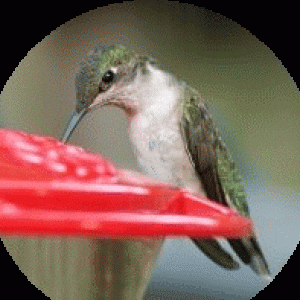 Last blog I talked about the use of bird names and that we in the U.S. use common names. Where did these names come from? Some are obvious – the Acorn Woodpecker stores acorns in trees and the Yellow Warbler is, guess what color? The Scissor-tailed Flycatcher has a very long tail and the Belted Kingfisher female has a rufous breastband. Some are named after people – Nuttall’s Woodpecker and Baird’s Sparrow (named after famous ornithologists), Clark’s Grebe and Lewis’ Woodpecker (named after Lewis and Clark). Some are named after a location or habitat – Oak and Juniper Titmouse, Mexican Jay, Wood Duck etc.
Last blog I talked about the use of bird names and that we in the U.S. use common names. Where did these names come from? Some are obvious – the Acorn Woodpecker stores acorns in trees and the Yellow Warbler is, guess what color? The Scissor-tailed Flycatcher has a very long tail and the Belted Kingfisher female has a rufous breastband. Some are named after people – Nuttall’s Woodpecker and Baird’s Sparrow (named after famous ornithologists), Clark’s Grebe and Lewis’ Woodpecker (named after Lewis and Clark). Some are named after a location or habitat – Oak and Juniper Titmouse, Mexican Jay, Wood Duck etc.
Behaviors have led to the naming of many birds. The Dipper bobs its body as if it were dipping water from a stream. Warblers have a melodious song. Thrashers stir up the forest floor looking for insect prey. Flycatchers and gnatcatchers are descriptively named although they certainly don’t restrict themselves to flies and gnats. The Killdeer is named after its call, although I never have been able to put the name and call together. More obvious is the chickadee, whose call is “chick- a- dee-dee-dee”.
Some names are more mysterious. What about “loon”? Some think it comes from the word “loony” referring to the moon and the weirdness of their call. Actually, it comes from a Scandinavian word “lom” meaning clumsy because these birds are built for swimming but very awkward on land. What about “titmouse?” The derivation is from the old English word “tittr” meaning small. Several European birds are simply called tits, such as Blue Tit and Coal Tit.
There are names that just don’t figure, however. The Red-bellied Woodpecker of the eastern U.S. has a red head or nape and only a pinkish wash to its belly. The nighthawk isn’t a hawk at all and is most common at dusk. The meadowlark is not a real lark, but a blackbird.
What is the difference between a heron and egret? Nothing, actually. The word “heron” derives from old German and “egret” from the French. “Aigrette “ is French for feather and French used to adorn their hats with heron feathers and were known as “Aigrette Colonels”. How about dove and pigeon? Again, nothing. “Dove” is an old Anglo-Saxon word and “pigeon” from the Normans. Our common city pigeon has been variously called the Rock Dove or Rock Pigeon.
When you compare the common names of birds in Europe to our bird names, what we call cormorant they call shag, what we call hawk they call buzzard, and our House Finch is their Linnet. Our loon is their diver, our merganser is their goosander. Avid birdwatchers in the U.S. are called birders; in Europe they are twitters – which of course has taken on a different meaning lately. American researchers band birds while Britishers ring them. My recent book, “Amazing Birds” has a British edition because of these language differences. To paraphrase a quote, in the bird world as well as everyday language “the English and Americans are separated by a common language”.
Behaviors have led to the naming of many birds. The Dipper bobs its body as if it were dipping water from a stream. Warblers have a melodious song. Thrashers stir up the forest floor looking for insect prey. Flycatchers and gnatcatchers are descriptively named although they certainly don’t restrict themselves to flies and gnats. The Killdeer is named after its call, although I never have been able to put the name and call together. More obvious is the chickadee, whose call is “chick- a- dee-dee-dee”.
Some names are more mysterious. What about “loon”? Some think it comes from the word “loony” referring to the moon and the weirdness of their call. Actually, it comes from a Scandanavian word “lom” meaning clumsy because these birds are built for swimming but very awkward on land. What about “titmouse?” The derivation is from the old English word “tittr” meaning small. Several European birds are simply called tits, such as Blue Tit and Coal Tit.
And the Bald Eagle? Not bald, but piebald, which means patched or spotted, like the white head patch. Piebald got abbreviated.